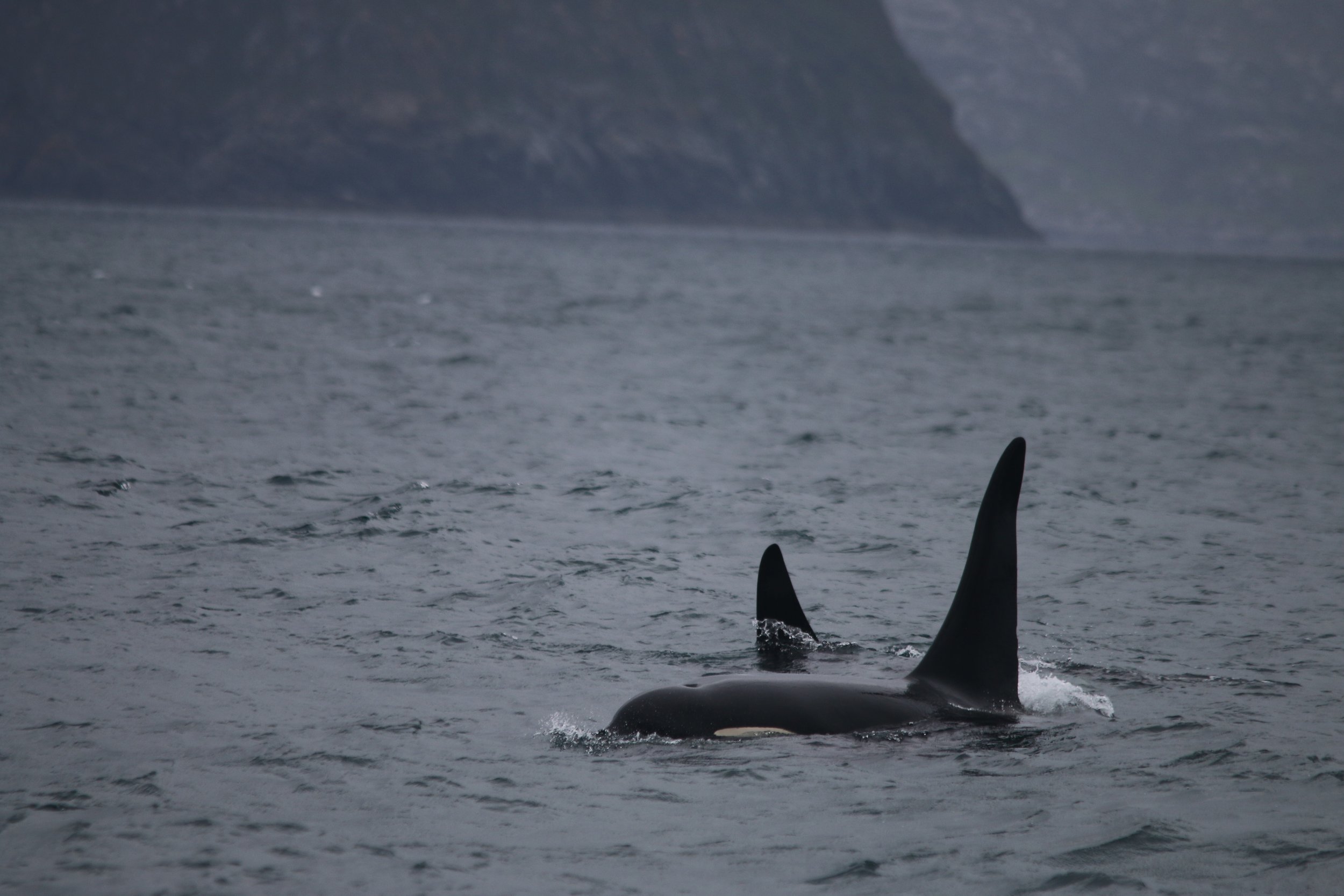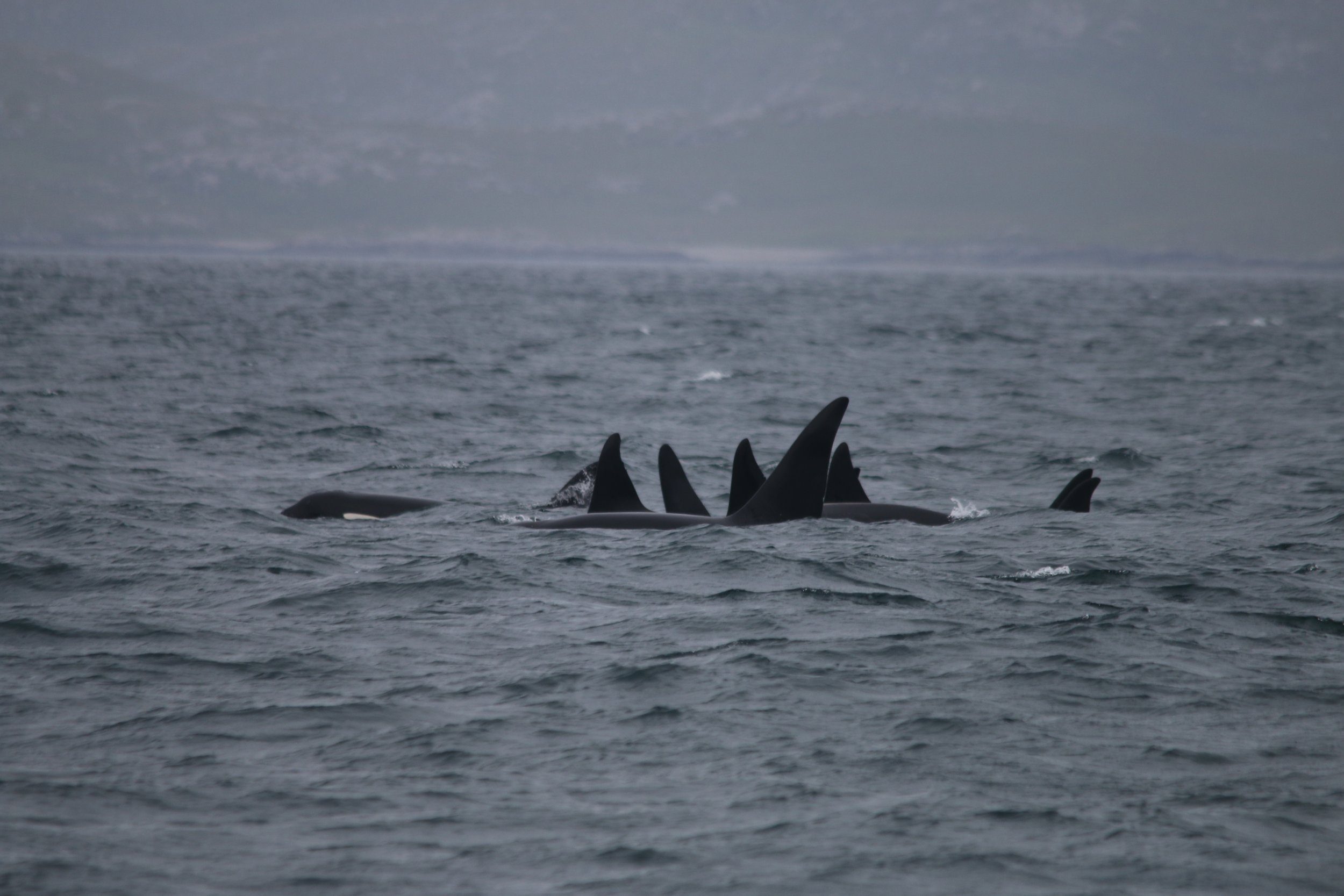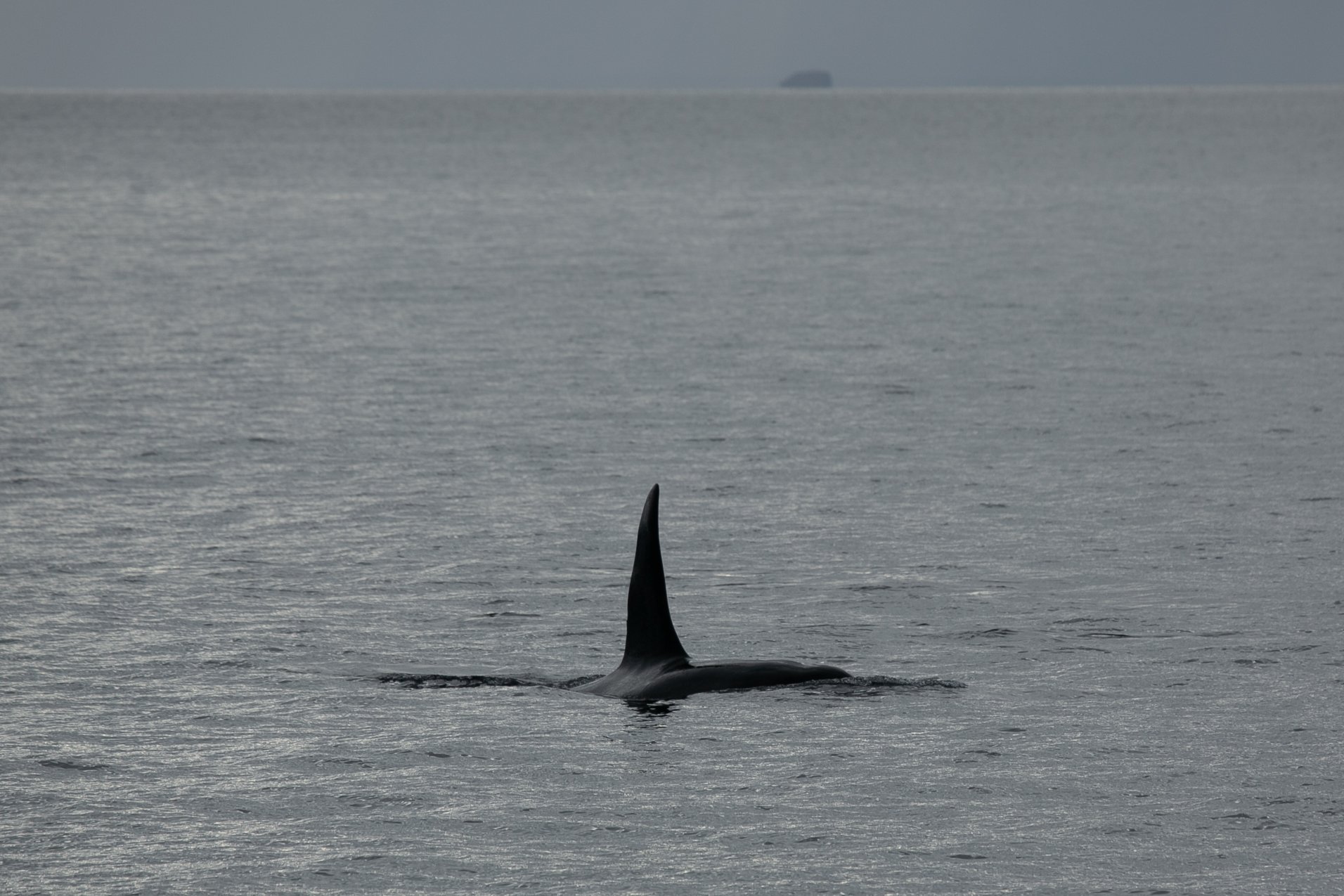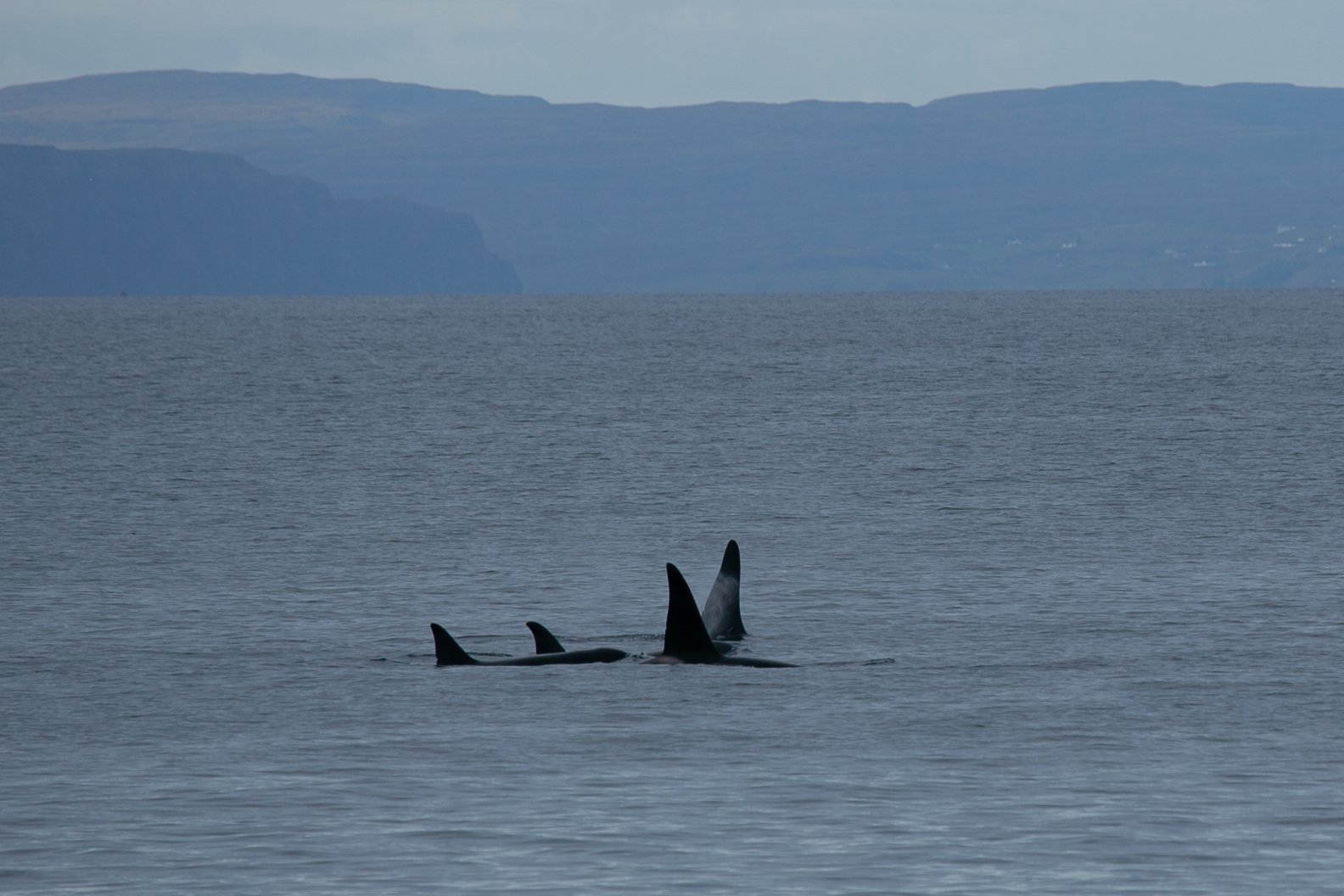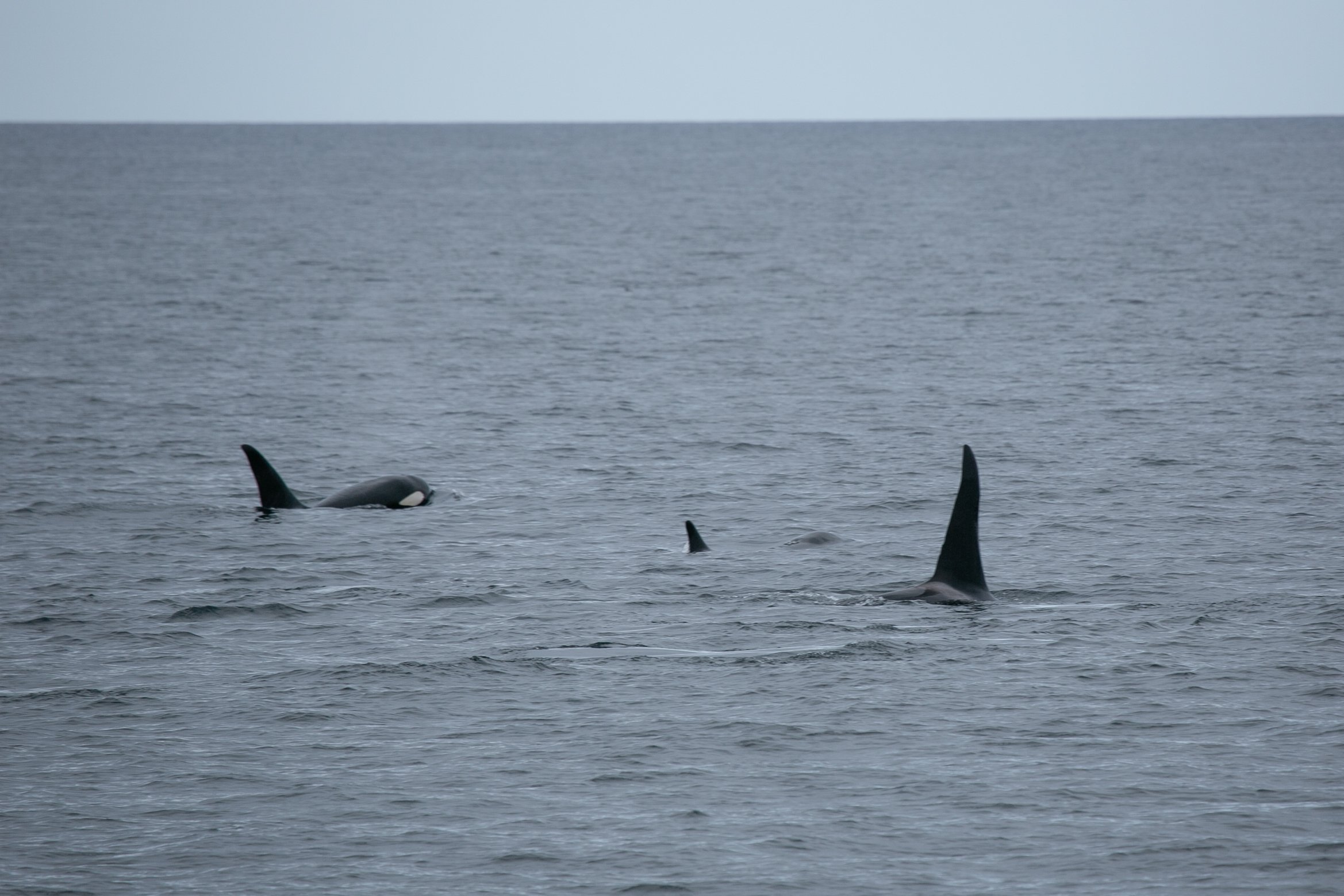‘Mystery pod’ surfaces in Hebrides once more!
Another piece of the puzzle - how citizen scientists are enhancing our understanding of killer whale populations.
Citizen science plays a key role in deepening our understanding of cetaceans – the collective term for whales, dolphins and porpoise – but what do we mean by the term citizen science?
‘Citizen science is the practice of public participation and collaboration in scientific research to increase scientific knowledge. Through citizen science, people share and contribute to data monitoring and collection programmes.’ (National Geographic Society)
So, who can be a citizen scientist? Well, that’s simple, anyone. Anyone can be a citizen scientist and contribute to our understanding of the cetaceans in Scottish waters. By sending in information of sightings you have of whales, dolphins, porpoise, or even other species such as basking sharks, sunfish and turtles, builds our knowledge of species presence and absence, population size, abundance and distribution. A lot of what we know already comes from reports sent in from members of the public – citizen scientists – who have shared their sightings and photographs with us. Moreover, significant discoveries can be made by citizen scientists.
The ‘mystery’ killer whale pod is a great example of the impact citizen scientists can have. The story begins in June of 2018, when the crew on board our research vessel Silurian encountered an unknown pod of 9 killer whales as they left their anchorage off Vatersay. Dubbed ‘the mystery killer whale pod’ at the time as neither our scientists nor our friends from the Scottish Killer Whale Catalogue could identify who this pod was or where they had come from.
Photo-identification is a widely used, non-intrusive research method which allows researchers to identify individual whales from natural markings or features on their bodies. Such images are catalogued and over time build an important long-term picture about whale movements – helping scientists to assess the movements and health of specific individuals. These insights are vital for informing suitable conservation measures
The pod remained a mystery until July 2021, when citizen scientist, Asmund Aashein, captured Photo ID images of a pod of killer whales in Børøyfjorden, Norway. Dr Eve Joudain from the Norwegian Orca Survey on inspection of the images, determined they did not match any of their Norwegian records and their saddle patches – the colouration on the animals’ backs – looked different to that of the killer whales normally seen around Norway. Upon further investigation, Dr Joudain eventually made a match with the Scottish Killer Whale Catalogue, it was the mystery pod encountered by the crew on board Silurian back in 2018.
This was a very exciting discovery, as it was the first killer whale match made between Scotland and Norway and was only possible thanks to citizen scientists taking good quality Photo ID images and sharing them with organisations like the Norwegian Orca Survey.
Flash forward to 28 May 2022, when Sara Frost, a tour leader for Naturetrek, had an amazing encounter with a pod of killer whales off the northwest coast of Skye.
“I'm a tour leader for NatureTrek and was guiding a wildlife cruise in the Minch… On Saturday (28th May) I saw a pod of (we think a total of 8) Orca off the north west coast of Skye. They were travelling south west, heading towards the Loch Maddy area of North Uist. There were definitely two adults males, some females but I thought there may have been 1-2 juveniles here too. I've guided wildlife cruises in the Hebrides for 10 years and never seen Orca here before, so this has really made my year!”
- Sara Frost
Mystery killer whale pod, May 2022 © Sara Frost
Sara reported her sighting and photographs to us in hopes we could shed a light on who this pod of killer whales was. Sharing the images with our friends at the Scottish Killer Whale Catalogue, they were able to identify several of the individuals as being from the ‘mystery’ pod seen from Silurian off Vatersay and later matched to individuals seen off Norway. This is the first time since July 2021 that this pod has been recorded and allows us to add another piece to their puzzle, thanks to citizen science.
“They're the first three orca to have been positively matched as having travelled between Scotland and Norway, so it’s exciting to see them back!”
- Andrew from the Scottish Killer Whale Catalogue who identified the individuals
This recent report shows how vital citizen scientists like Asmund and Sara are to helping broaden our understanding of these amazing and mysterious animals. Approximately 70% of HWDT’s photo-identification catalogues are images submitted through Whale Track, a community of citizen scientists, enabling us to track movements, determine population size and inform conservation efforts.
Anyone can get involved to help track the movements of individual animals and contribute to marine conservation efforts by submitting sightings and photographs through the Whale Track app or website, contributing to our growing knowledge of the species and individuals seen in not only Scottish waters, but further afield too.
If you’d like to learn more about how your images can be used for Photo ID, then join us for a free online training workshop on Thursday 30 June at 7pm.

